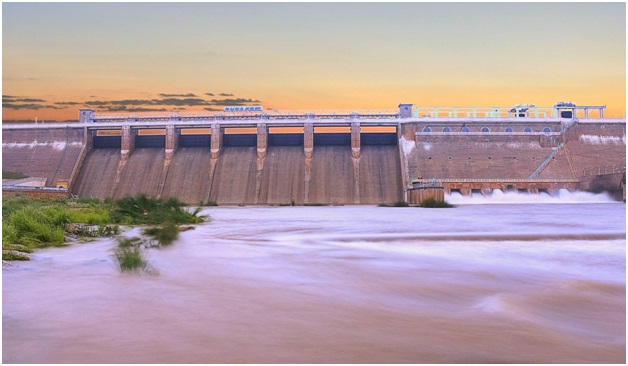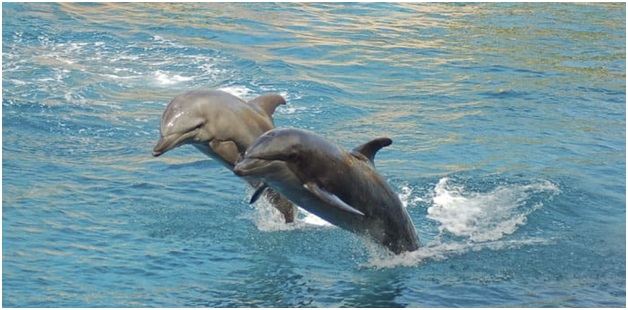'Pralay' Missile (The Hindu)

- 08 Nov 2023
Why in the News?
India on November 7 successfully test-fired its surface-to-surface short-range ballistic missile (SRBM) 'Pralay' from the Abdul Kalam Island off the Odisha coast.
About the Pralay missile:
- The Pralay missile is a short-range ballistic missile developed by India’s Defense Research and Development Organization (DRDO).
- It is similar in design and functionality to Russia’s Iskander-M quasi-ballistic missile.
- With a range that can vary from 150-500 km, the Pralay is equipped with a 500 kg payload that gives it a reach of 400 km.
- One of the key features of the Pralay missile is its ability to switch from a ballistic to a flat trajectory after launch.
- This quasi-ballistic trajectory, combined with high speeds and terminal maneuvering capabilities, makes it incredibly difficult for adversary air defense systems to intercept.
- The Pralay missile is a land mobile quick reaction system, launched from storage and transportation canisters and housed in either a 12×12 or an 8×8 launcher configuration.
- Furthermore, the missile’s jet vane system allows for evasive maneuvers in the terminal phase of flight, and it is even speculated that the Pralay has the capability to release decoys, adding an additional layer of defense.
- Its indigenously developed Fused Silica Radar-dome (RADOME) further enhances its radar transparency, making it even more challenging for enemy radars to detect.
- With the Pralay missile, India is reaffirming its commitment to developing and deploying advanced defense systems that can effectively counter adversary air defense systems.
- In an era where stealth technology is being challenged, the Pralay missile presents a formidable solution for striking targets deep behind enemy lines with minimal risk.
Treaty of Conventional Armed Forces in Europe (CFE) (Indian Express)

- 08 Nov 2023
Why in the News?
NATO on Tuesday announced the formal suspension of a key Cold War-era security treaty in response to Russia’s pullout from the deal.
About Treaty of Conventional Armed Forces in Europe (CFE):
- During the final years of the Cold War, negotiators signed the CFE, a treaty that placed restrictions on the deployment of military equipment to maintain a military balance between the North Atlantic Treaty Organization (NATO) and the then-Warsaw Pact countries.
- The treaty's purpose was to prevent the rapid build-up of forces that could be used in a swift assault.
- On November 19, 1990, twenty-two member states from both NATO and the Warsaw Pact came together in Paris to sign the agreement, a year after the fall of the Berlin Wall.
- The CFE finally entered into force on November 9, 1992, following the disintegration of the Warsaw Pact.
- The Treaty set specific limits on the number of battle tanks, armored combat vehicles, artillery pieces, combat aircraft, and attack helicopters that NATO and Warsaw Pact states could have on their respective territories.
- To meet these limits, CFE state parties destroyed over 50,000 weapons systems over subsequent years.
- These actions were monitored through a compliance mechanism that involved information sharing and reciprocal inspections.
- Furthermore, the treaty's scope was expanded to cover troop numbers in a 1992 follow-up agreement known as the CFE-1A.
- This arrangement arranged limits on military personnel levels.
- In 1999, during the Istanbul summit of the Organization for Security and Co-operation in Europe (OSCE), CFE Treaty partners reached an agreement on an updated and modified arrangement known as the Adapted CFE Treaty.
- One significant change was that limitations on conventional weapon systems were no longer linked to two military blocs but to the territorial borders of individual states.
- However, Russia suspended its participation in the treaty in 2007 and ceased active participation in 2015.
Krishi 24/7 7 (The Hindu Business Line)

- 08 Nov 2023
Why in the News?
Recently, the Union Agriculture Ministry partnered with the Wadhwani Institute for Artificial Intelligence (Wadhwani AI) to create a solution known as Krishi 24/7.
About Krishi 24/7:
- Krishi 24/7 is a groundbreaking AI-powered solution developed with support from Google.org, designed for automated monitoring and analysis of agricultural news.
- Key Features:
- This tool scans news articles in various languages and translates them into English for easy access.
- It extracts crucial information from news articles, including headlines, crop details, event types, dates, locations, severity, summaries, and source links.
- This ensures that the ministry receives timely updates on relevant events found on the internet.
- Significance:
- Krishi 24/7 addresses the vital need for an efficient system to identify and manage agricultural news articles.
- This aids in making timely decisions.
- It serves the Department of Agriculture and Farmers Welfare (DA&FW) by identifying pertinent news, delivering timely alerts, and facilitating swift action to protect the interests of farmers and promote sustainable agricultural growth through informed decision-making.
Vaigai Dam (The Hindu)

- 08 Nov 2023
Why in the News?
The third and final flood warning has been issued for five southern districts after the water level in Vaigai dam touched 69 feet (full reservoir level 71 ft) at 7 a.m. on Wednesday, November 8.
About Vaigai Dam:
- Built across the Vaigai River, the Vaigai Dam is located near Andipatti in Tamil Nadu's Theni district.
- The dam was inaugurated by then Chief Minister K. Kamaraj on January 21, 1959, and is often referred to as the lifeline of the people of this region.
- The farmers in the region are completely dependent on the water from the dam for irrigation purposes.
- With a height of 111 feet, the dam has the capacity to store up to 71 feet of water.
- Its main purpose is to provide irrigation water for the Madurai and Dindigul districts, as well as drinking water for Madurai and Andipatti residents.
- Close to the dam, the Government of Tamil Nadu has established an Agricultural Research Station dedicated to crop research.
- Additionally, there is a charming garden called Little Brindavan situated near the dam, offering a delightful place for visitors.
Project Dolphin (The Hindu)

- 08 Nov 2023
Why in the News?
In an effort to conserve dolphins and their habitat, the Tamil Nadu government has issued orders to implement Project Dolphin under the Union government’s Integrated Development of Wildlife Habitats scheme.
About Project Dolphin:
- Project Dolphin is a national conservation initiative approved in 2019 during the first meeting of the Prime Minister-led National Ganga Council (NGC) and launched in 2021 to safeguard both riverine and oceanic dolphin species.
- It's part of the larger Arth Ganga program, which is a government initiative.
- It is modeled after Project Tiger, the successful conservation program that has played a significant role in the resurgence of tigers in India.
- The Project Dolphin will strengthen the marine ecology and overall health of the marine Environment and will be implemented at a cost of Rs.8.13 crore.
- The major habitats of the dolphins are found in the Gulf of Mannar Biosphere Reserve (Tamil Nadu).
- The Ministry of Environment, Forests, and Climate Change is responsible for implementing Project Dolphin.
- The main goal is to ensure the long-term survival of these dolphins and, by extension, the overall health of the river's aquatic life.
- The National Mission for Clean Ganga (NMCG) started a dolphin conservation program in 2016 to work towards this important mission.
- Dolphins play an important role in keeping the marine environment in balance.
- Dolphins worldwide face various natural and human-induced threats which include hunting, entanglement in fishing nets, overfishing, climate change, ship strikes, tourism activities, toxic contamination, noise pollution, oil and gas development, and habitat degradation.
- The conservation of dolphins and their aquatic habitat through the use of modern technology by engaging with fishermen and other ocean-dependent populations is proposed under the project.
- The project will focus on key activities including strengthening of protection activities through better patrolling anti-poaching activities and strengthening of the surveillance and patrolling teams with modern equipment and technology;
- Rescue and rehabilitation activities through the strengthening of veterinary services, patrolling and training, etc;
- Dolphin habitat improvement through the restoration of coastal eco-system like mangroves, corals, sea grass, etc;
- Removal of ghost nets and reduction of pollution in coastal areas;
- enhancing awareness through the celebration of “National Dolphin Day”
